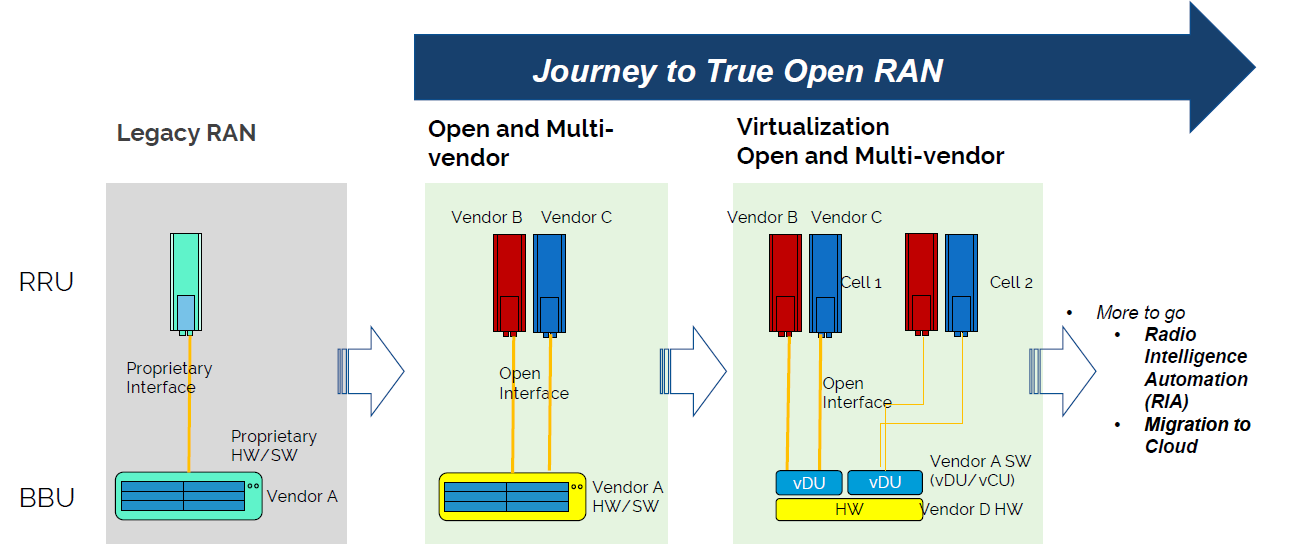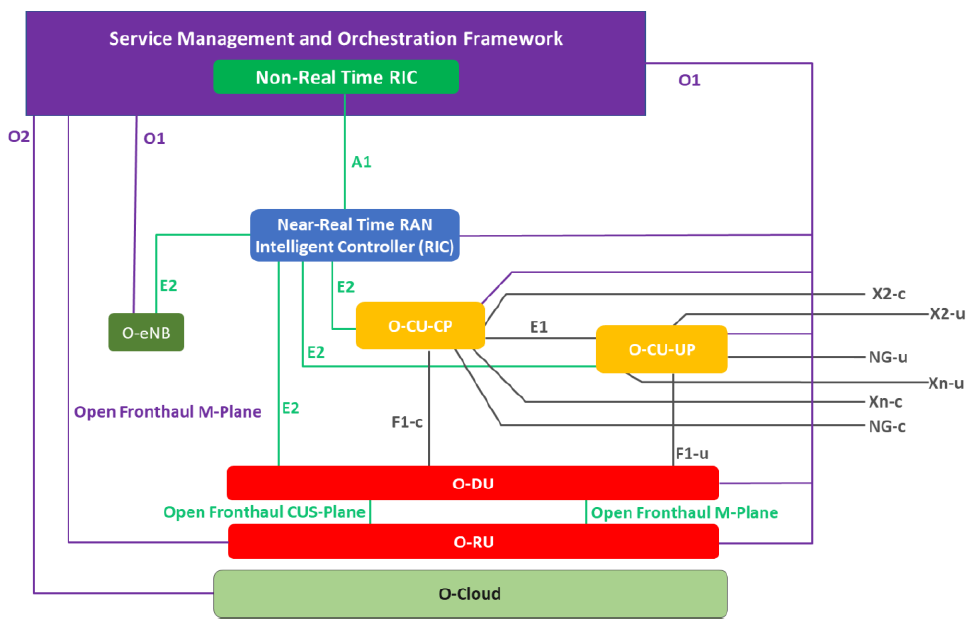What Open RAN Means For Network Infrastructure & 5G?
Mobile data demand has increased rapidly from 3G to 4G, and now 5G. In order to fulfil the high-capacity requirement, the use of higher frequency spectrum bands like 3.5GHz is necessary due to the demand of wider bandwidth for 5G applications. However, the drawback of smaller 5G cell range becomes another challenge while more cell sites needed to provide the coverage to be on-par with 3G/4G.
Open RAN changes the way of how RAN infrastructure built today
A typical mobile network consists of Core Network, Transport and Radio Access Network (RAN), but RAN infrastructure alone represent 70% of the CAPEX in the entire mobile network. In traditional RAN, the BBU and RRU are supplied by a single vendor with a proprietary interface. To lower down the cost, it is important to enable a more competitive supplier ecosystem and avoid vendor lock-in.
Open RAN fronthaul interface based on functional split option 7-2 protocol allows BBU and RRU to be supplied by different Open RAN vendors. In addition, by decoupling software and hardware, network functions will be virtualized and will run in a generic Commercial-of-the-Shelf (COTS) server. Meaning to say, there'll be no more equipment cabinets in the base station room but replaced by a standard server rack.

Evolution of RAN Architecture towards Disaggregation and Multi-Vendor
RAN sharing becomes more feasible in Open RAN
One of the top challenges in network rollout is site acquisition, it is unusual for a building owner to approve every single operator for wiring their own infrastructure due to limited space and aesthetic reasons. However, site densification in 5G requires a large number of new sites and fiber connections leading to huge deployment costs. Under this circumstance, operators are considering to share the network infrastructure with other operators, or rely on the neutral host [1].
In a multi-operator RAN (MORAN) network, operators will share RAN components such as the base station, RRU, small cell, fiber network and active/passive DAS. Comparing to site installation by a single operator, co-siting would greatly reduce the physical hardware footprint, and eventually bring down CAPEX and OPEX. Unfortunately, MORAN deployment shared by more than two operators is rarely seen in cell sites. Complicated agreement and technical alignment between the parties can be the probable reasons.
Thanks to virtualization, network functions running in the COTS hardware will be deployed in the form of virtual machine (VM) which offers high scalability and flexibility in the network functions deployment. Unlike traditional RAN architectures, O-RAN can provide a set of open interfaces (remote E2, O1/O2) that enable the monitoring of the remote users’ performance, facilitating the optimization of the radio allocation process and the remote configuration of QoS parameters. [2]

O-RAN Overall Logical Architecture [2]
Open RAN Cloud-Native network
There are many possible deployment scenarios in an Open RAN network, but it can only achieve full potential under an end-to-end cloud-native network. Depending on different scenarios, the O-DU and O-CU can be co-located or deployed in separate cloud locations, with options of regional cloud, edge cloud, public cloud and private cloud. As mobile and IT infrastructure gradually converge, it is expected that cloud providers will play a key role and more data centers will be built to accommodate the future demands.
References:
[1] MNOs labor under 5G complexity, tough choices with many partners, Rethink Research, Feb 2021
[2] O-RAN Use Cases and Deployment Scenarios, Towards Open and Smart RAN, O-RAN Alliance, Feb 2020